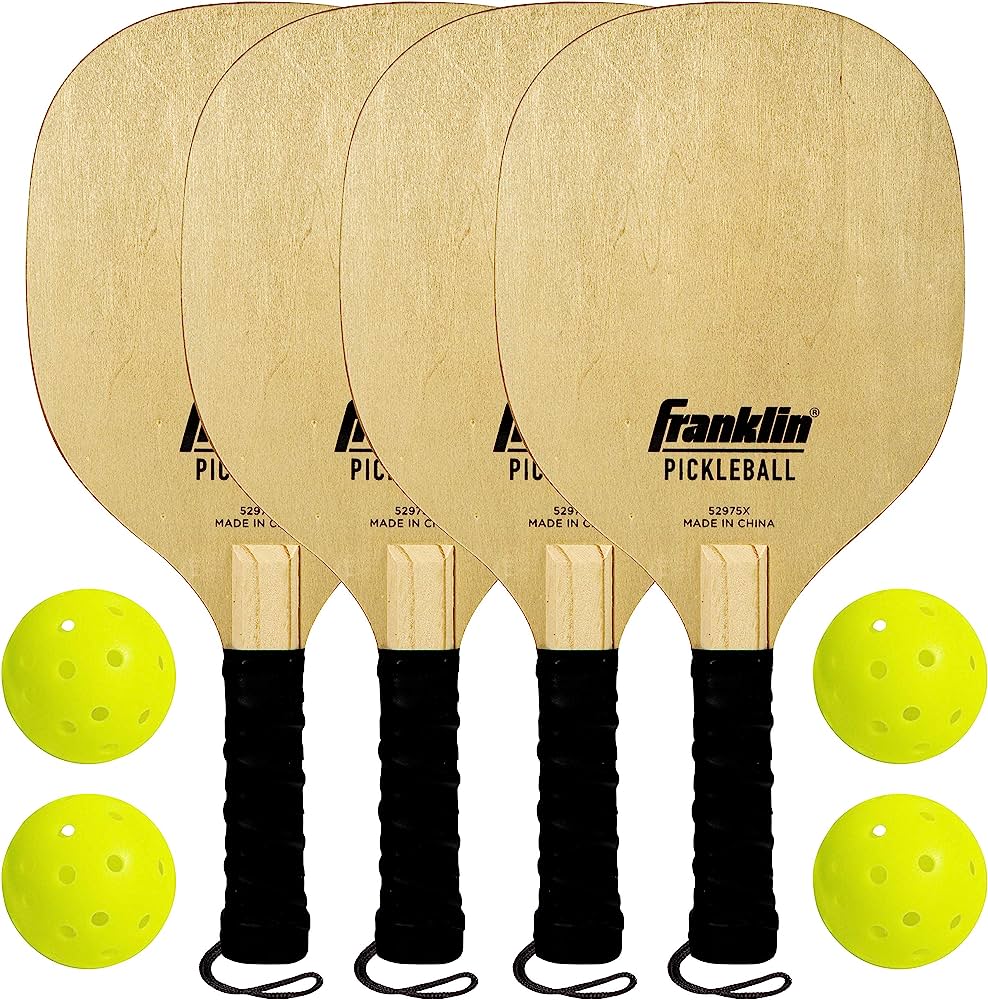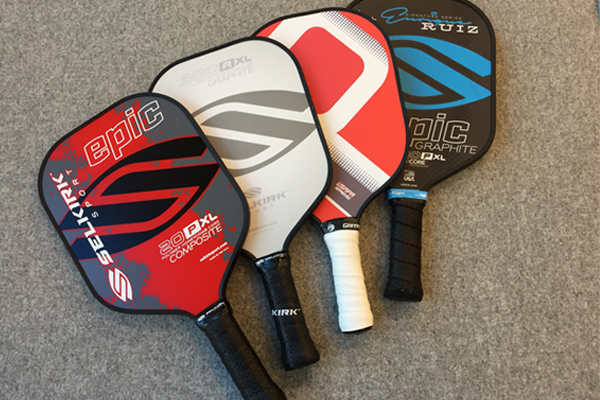Composite vs Wood Pickleball Paddles: Which is Right for You?
Pickleball has taken the world by storm, drawing millions into its enthusiastic fold. A vital component of this engaging sport is selecting the right paddle. Among the myriad of options, two materials stand out composite vs wood pickleball paddles. This article serves as a comprehensive guide, helping you to navigate the perks and pitfalls of both, ensuring you make an informed choice.

Choosing the right pickleball paddle can be a bit like choosing a dance partner; it has to suit your style and elevate your game. Composite and wooden paddles each offer unique benefits and drawbacks. By understanding these differences, you’ll be better equipped to pick the paddle that will make you a maestro on the pickleball court.
Wood Pickleball Paddles: A Classic Choice with a Unique Feel

The Traditional Appeal of Wood: A Natural and Responsive Paddle
Wood pickleball paddles were the pioneers of the sport, a testament to their enduring appeal. Crafted typically from hardwoods like maple or birch, these paddles offer a nostalgic essence, reminiscent of the early days of pickleball.
- Natural Feel: The tactile sensation of striking with a wooden paddle is second to none. Players often describe it as a more “organic” experience, likened to the difference between playing an acoustic guitar versus an electric one.
- Responsive: The responsiveness of wood contributes to a unique “pop” when hitting the ball. This quality can provide players with a heightened sense of control and finesse.
Durability and Longevity: A Well-Crafted Paddle Can Last
Wood paddles, when crafted well and maintained correctly, can serve you for years.
- Durability: The density of hardwood used in wood paddles adds to their robustness. Unlike many modern materials, a scratch or ding won’t significantly compromise the paddle’s integrity.
- Longevity: Proper care, such as avoiding prolonged exposure to moisture and extreme temperatures, can significantly extend the life of a wood paddle. Some paddles, treasured by their owners, even become family heirlooms.
Pros and Cons
Pros:
- Affordable
- Durable with proper care
- Traditional, natural feel
Cons:
- Heavier and less maneuverable
- Generally less powerful
- Limited advanced features such as textured surfaces for spin
Composite Pickleball Paddles: The Power of Modern Technology

The Innovation of Composites: A Blend of Power, Control, and Feel
Composite paddles represent the zenith of pickleball technology, offering a revolutionary blend of materials such as fiberglass, carbon fiber, and polymer resin.
- Composite Construction: Composite paddles combine different synthetic materials to optimize various aspects like weight, power, and control. This concoction is akin to a gourmet dish that balances flavors to perfection.
- Versatility: Manufacturers have the latitude to tweak composite materials to cater to diverse playing styles. Whether you prefer a robust, power-focused paddle or one oriented towards precision and control, there’s a composite paddle designed for you.
Enhanced Performance and Versatility: A Paddle for Every Game
Composite paddles often come loaded with features that elevate your game.
- Power and Control: These paddles offer a delightful marriage of power and control. Advanced players will appreciate the oomph they get from a composite paddle during aggressive play, without sacrificing finesse.
- Textured Surfaces: Many composite paddles incorporate textured surfaces, providing better grip and enhancing spin capabilities. Imagine being able to curve your shots with the precision of a seasoned soccer player bending a free kick.
- Larger Sweet Spots: The sweet spot on a paddle is the area where you get the best response. Composite paddles often have larger sweet spots, making it easier for players to find optimal hitting zones.
Pros and Cons
Pros:
- Lightweight and maneuverable
- High power and control
- Advanced features like textured surfaces and larger sweet spots
Cons:
- Generally more expensive
- May not last as long as well-maintained wood paddles
- Less traditional feel
Comparison: Composite vs. Wood
To get a clearer picture, let’s break down a side-by-side comparison:
| Material | Wood Pickleball Paddle | Composite Pickleball Paddle |
| Weight | Typically heavier, which can hinder quick maneuverability. | Generally lighter, offering better swing speed and control |
| Power | Less powerful due to softer construction. | More powerful, ideal for aggressive play |
| Control | Offers a natural feel and better touch for finesse shots. | Provides a good balance of power and control, especially for advanced players. |
| Feel | Traditional and natural, appealing to nostalgic players. | Modern and responsive, often with textured surfaces for added grip. |
| Budget | Generally more affordable, an excellent entry-level option. | Higher price tag, though with varying ranges to suit different budgets. |
Choosing the Right Paddle for You: Key Considerations
Playing Style: Matching Paddle Material to Your Game
Your playing style is pivotal when choosing between wood and composite paddles.
- Power Players: If you thrive on powerful smashes and aggressive play, a composite paddle can amplify your game.
- Control Enthusiasts: If you focus on ball placement and finesse, the natural feel of a wood paddle might suit you better.
Skill Level and Experience: Considering Material for Different Players
The level of play should guide your decision.
- Beginners: Often find wood paddles easier to control.
- Intermediate/Advanced: Players may benefit more from the power and versatility offered by composite paddles.
Budget and Investment: Balancing Performance and Cost
Cost is a factor that can’t be ignored.
- Affordable Entry: Wood paddles offer an excellent budget-friendly entry into pickleball.
- Worthy Investment: Composite paddles might require a higher initial outlay, but the performance gains can justify the expenditure for serious players.
Common Questions
Are wood paddles always more traditional than composite paddles?
While wood paddles inherently offer a more traditional feel due to their natural composition, the term “traditional” doesn’t imply inferior performance. Composite paddles, though modern, can also be crafted to mimic traditional qualities while adding enhanced features.
What are some of the key differences between composite and wood paddle construction?
Composite paddles are made from synthetic materials like fiberglass or carbon fiber, often featuring polymer cores. Wood paddles, on the other hand, are crafted from hardwood, providing a more natural playing experience.
What are some popular pickleball paddle brands that offer both composite and wood options?
Brands like Selkirk, Onix, and Paddletek offer a range of both wood and composite paddles, catering to different preferences and budgets.
How do composite and wood paddles compare in terms of price, durability, and performance?
| Aspect | Wood Paddles | Composite Paddles |
|---|---|---|
| Price | More affordable | Higher, with a range of price options |
| Durability | Durable with proper care | Generally durable, but may not last as long |
| Performance | Natural feel, less power | Balanced power, control, and additional features |
Conclusion
Whether you gravitate towards the seasoned charm and tactile satisfaction of wood, or the innovative power and versatility of a composite paddle, both have their unique place on the pickleball court. The right choice hinges on your playing style, skill level, and budget. Delve into the experience, hear the “pop” of wood or feel the sleek response of composite, and discover the paddle that resonates with you.
What type of pickleball paddle do you prefer? Share your thoughts in the comments!
Have you tried both composite and wooden paddles? Tell us about your experience and which one elevates your game to soaring new heights. Happy playing!
